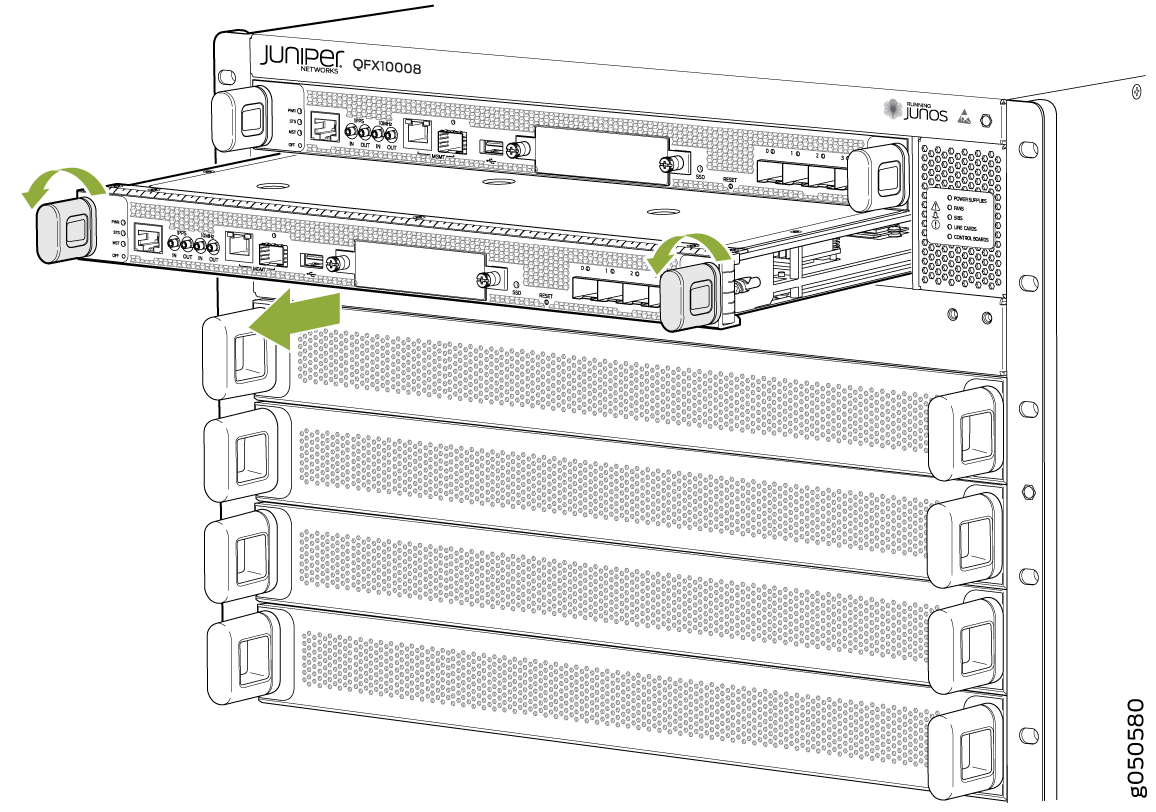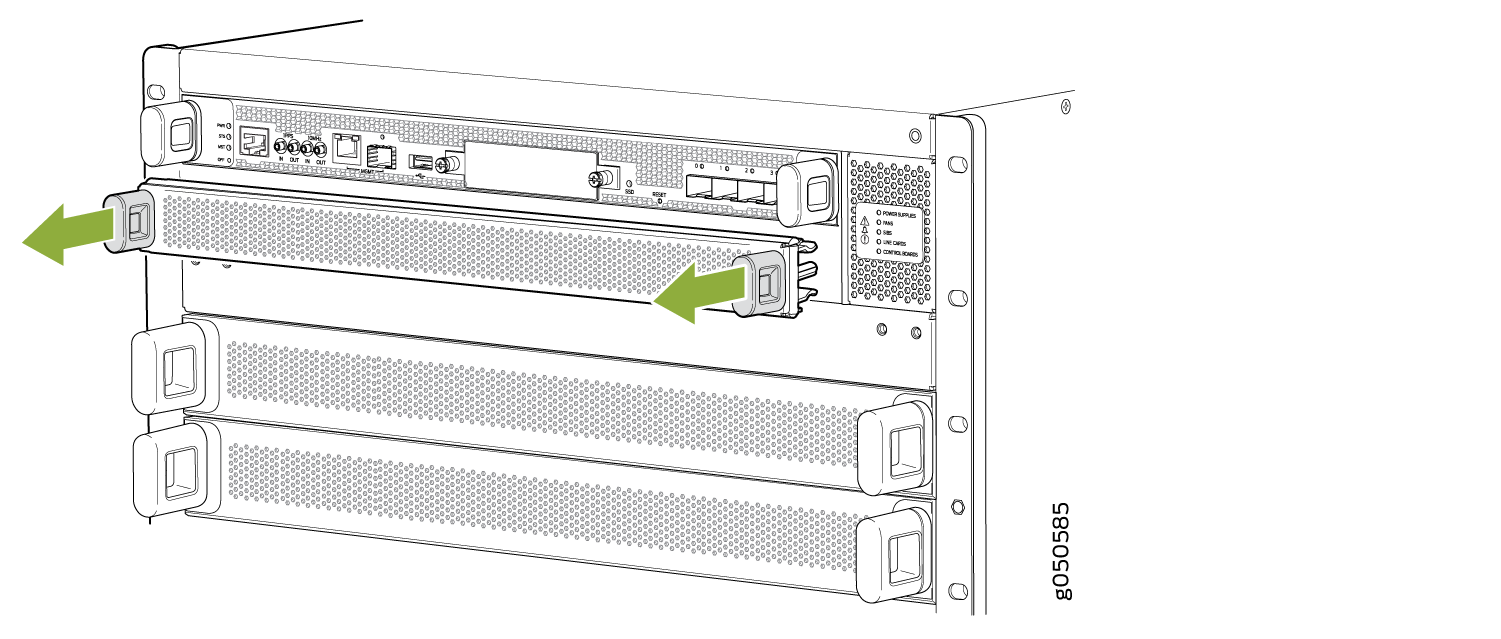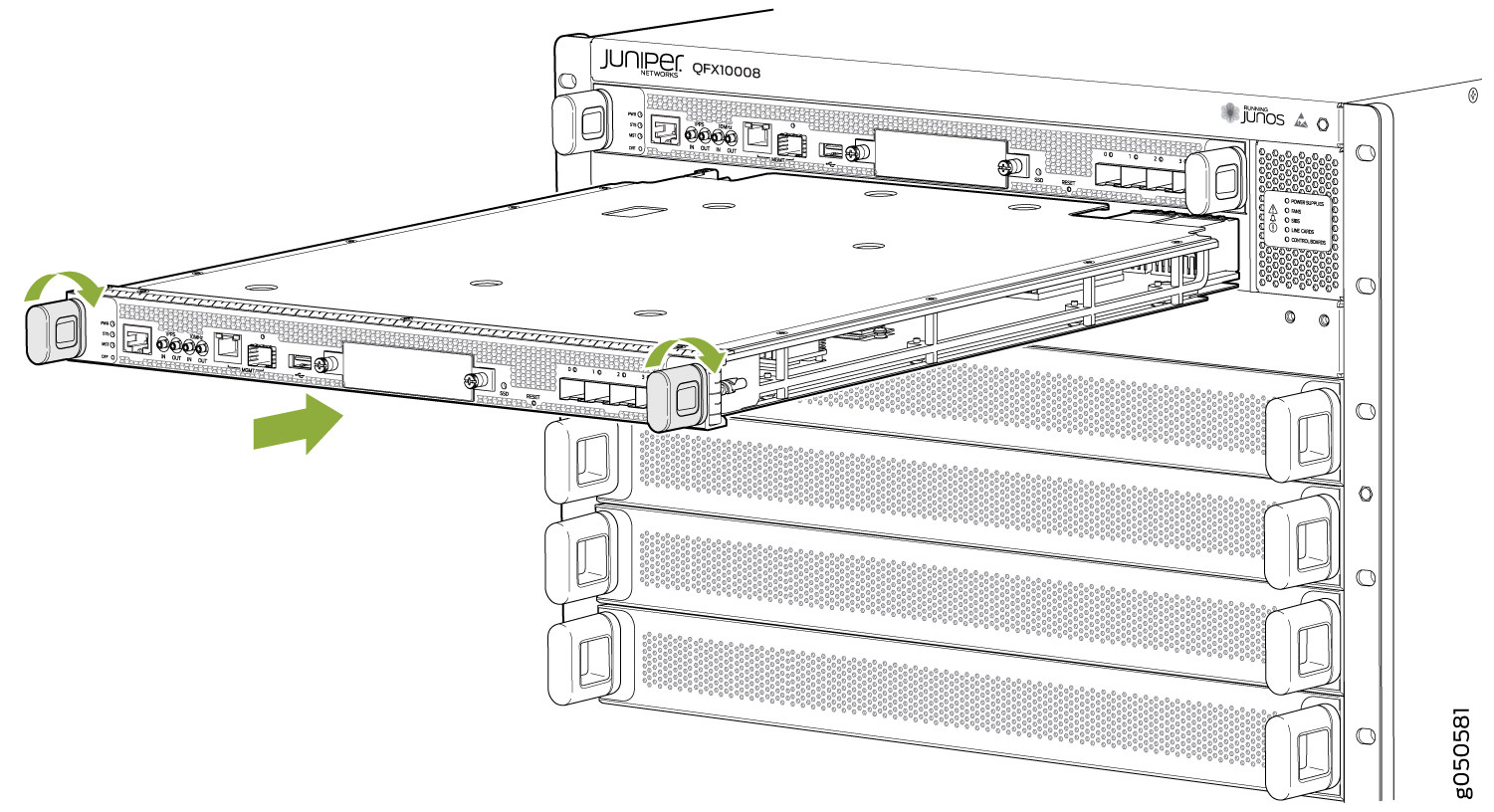Maintaining QFX10000 Routing and Control Boards
Removing a QFX10000 Routing and Control Board
The QFX10000 line of modular chassis can have one or two Routing and Control Boards (RCBs), depending on the configuration. RCBs can be installed in either of the two top slots on the front of the chassis.
In redundant configurations, a QFX10000 RCB is a hot-removable and hot-insertable field-replaceable unit (FRU). In base configurations, you need to install a second RCB before removing a failing RCB in order to prevent the switch from shutting down. We recommend that you take base systems offline before replacing the RCB.
Before you remove an RCB, ensure that you have an electrostatic discharge (ESD) grounding strap.
In base configurations, removal of the RCB causes the system to shut down. In redundant configurations, removal of the RCB causes the system to reboot and start the election process for a new primary.
To remove an RCB:
Installing a QFX10000 Routing and Control Board
The QFX10000 line of modular chassis can have one or two Routing and Control Boards (RCBs), depending on the configuration. RCBs can be installed in either of the two top slots on the front of the chassis.
In redundant configurations, a QFX10000 RCB is a hot-removable and hot-insertable field-replaceable unit (FRU). In base configurations, you need to install a second RCB before removing a failing RCB in order to prevent the switch from shutting down.
Before you install a RCB, ensure that you have an electrostatic discharge (ESD) grounding strap.
To install a RCB:





